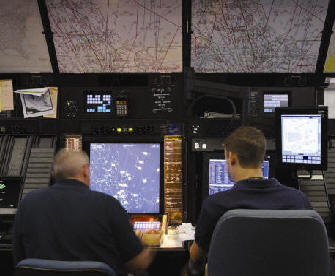 |
|
|
|
|
|
|||
|
By |
||||
 |
March 10, 2010 - The Federal Aviation Administration (FAA) is forecasting that key airspace safety and efficiency modernization efforts will play a vital role in spurring long-term sustained growth in air travel and the nation’s overall economic health. This forecast, which comes after a short-term period of slow growth in aviation activity, underscores the need for the Next Generation Air Transportation System (NextGen) and continued investment in airport infrastructure projects.
“A safe, efficient
and vibrant aviation system is vital to our nation’s economic health,”
said Secretary of Transportation Ray LaHood. “We must find long-term
solutions that will keep the The FAA’s 20-year forecast for Fiscal Years 2010-2030 predicts domestic passenger enplanements will increase by 0.5 percent in 2010 and then grow an average of 2.5 percent per year during the remaining forecast period. |
|||
|
Total
operations at airports are forecast to decrease 2.7 percent to 51.5
million in 2010, and then grow at an average annual rate of 1.5
percent reaching 69.6 million in 2030. At the nation's 35 busiest
airports, operations are expected to increase 60 percent from 2010
to 2030.
The FAA predicts that “This forecast makes a very strong business case for NextGen,” said FAA Administrator Randy Babbitt. "Without NextGen, we won’t be able to handle the increased demand for service that this forecast anticipates.” NextGen is transforming air traffic control from the ground-based radar system of today to a satellite-based system of the future. These advancements are already showing safety, efficiency and environmental benefits. NextGen technologies and procedures will increase capacity and safety and reduce fuel burn, carbon emissions and noise by providing more efficient air routes and procedures. |
||||
|
Other innovations include improved weather forecasting, data networking and digital communications. Hand in hand with these state-of-the-art technologies are airport improvements that are beginning to give pilots and controllers a more precise picture of the location of aircraft and vehicles on runways and taxiways. The American Recovery and Reinvestment Act of 2009 (ARRA) provides significant infrastructure improvements to meet growing airspace needs. It has provided $1.1 billion to airports nationwide. To date, 326 grants for over 360 projects have been distributed to airports that support passenger and cargo service as well as general aviation. Recovery Act grants are being used at both urban and rural airports to fund a variety of different modernization efforts including facility construction, safety enhancements and the rehabilitation of runways, taxiways and other infrastructure. Today’s FAA forecast was unveiled at an annual aviation conference in Washington that brings members of the aviation community together to discuss how the forecast projections may affect policies and plans for aviation. |
| ©AvStop
Online Magazine
Contact
Us
Return To News
|
|
